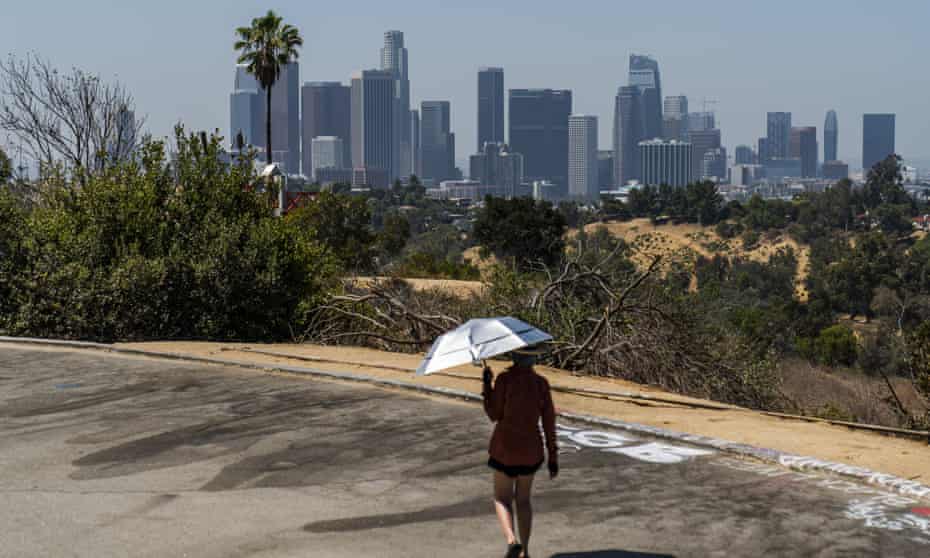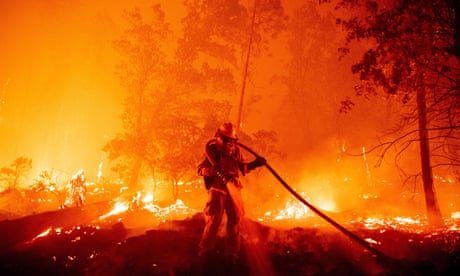Extract from The Guardian
Experts and advocates are also exploring new ranking systems to add urgency to the growing disaster of rapidly warming landscapes.

Last modified on Wed 2 Mar 2022 05.38 AEDT
Climate scientists from around the world issued dire warnings on Monday, in the latest IPCC report on the dangers posed in the unfolding climate crisis. Among them is extreme heat, a crisis that on average already claims more American lives than hurricanes and tornadoes combined.
Though the impact is already being felt, heatwaves are largely silent killers. Often, the toll is tallied far into the aftermath of an event and is vastly undercounted. Unlike fires and floods that produce immediate and visible destruction, heat’s harmful effects can seem more subtle – even if they are in fact more deadly.
“People don’t think of heat as a hazard,” says Kristie Ebi, a professor in the Center for Health and the Global Environment at the University of Washington. But in the Pacific north-west, where Ebi lives, for example, unprecedented temperatures baked the region last year, bewildering residents used to moderate, often lukewarm, summers.

Policymakers and environmentalists are looking for better ways to close the gap in the public’s perception of the risks, especially in the American west where landscapes are rapidly warming.
Some are pushing for new ranking systems to help elevate awareness around the issue or assign heatwaves names, much like federal agencies do for hurricanes.
“We need a shock to the system,” said Kathy Baughman McLeod, the senior vice-president and director of the Adrienne Arsht Rockefeller Foundation Resilience Center. The organization, which focuses on policy solutions to the climate crisis, has advocated heatwave naming along with number categories as a way to add urgency to the growing disasters.
“If you go into the hospital now and are suffering from heat they will say you have kidney failure or heart failure” she says. “There are so many areas now we need to culturally shift that context of heat.”
The group advised California on new legislation introduced last year, which would make it the first state to implement a naming and ranking system like the organizational system for categorizing storms dating back in the 1800s. Athens, Greece and Seville, Spain will roll out similar programs later this year.

A sign at Zabriskie Point in Death Valley warns hikers of the risk of heat. Photograph: Bridget Bennet/Reuters
Advocates of the program believe assigning a name to a disaster will help people engage with it. “It becomes an identity and a brand is built,” Baughman McLeod said, adding that it also helps for archival purposes. “We all remember what happened during Hurricane Sandy. I know what a category 3 is and I know when it has a name it has reached a certain threshold and I need to pay attention and act.”
Naming aside, the two bills in California also outline the creation of an interagency heat taskforce, an extreme heat advisory council, and will open a new chief heat officer role to oversee planning and preparation. The pieces of legislation, if they pass, would initiate statewide advance warning and ranking by the start of 2024 and would establish the Extreme Heat and Community Resilience Program to coordinate state efforts and coordinate with local and regional officials.
Ebi says that coordination between agencies – that include local, state and federal programs – will be key. “There are lots of opportunities to facilitate the information transfer so that as people develop these systems they don’t start from the very beginning” she said, noting that a variety of stakeholders should be brought to the table. “On the one hand the projections are dire,” Ebi says. “But on the other, we have an enormous basket of options for what can be done to protect people who are at higher risk during a heatwave.”
Several municipalities across the west and governments across the globe are already adopting heat programs and plans. At the federal level, The National Integrated Heat Health Information Systems and White House Extreme Heat Interagency Working Group are collaborating to expand messaging about extreme heat and offering up lessons learned.
Phoenix, which is at the top of the list of rapidly heating cities, hired scientist and heat expert David Hondula to head its new Office of Heat Response and Mitigation in September last year, becoming the first city to launch a publicly-funded position of this kind. Miami, Florida also brought on a chief heat officer, as did Athens, Greece and Freetown in Sierra Leone.
There’s still a difficult path ahead, but according to Ebi, planning will go a long way.
“All heat-related deaths are preventable,” she said. “We have a real opportunity to improve lives today even if the climate continues to change.”
This article was amended to remove reference to a study that found hurricanes with female names were more deadly than male-named hurricanes. The study, published in 2014, was subsequently challenged by the scientific community.
No comments:
Post a Comment